The title of this article would have been impossible a mere 60 years ago. Back then, what is now the high-gloss oil-infused city-state of Dubai was little more than a desert outpost with more sand than pavement. Even until the 1990s, it wouldn’t have been an exaggeration to say that camels outnumbered high rises. But the black gold rush changed all that. In the last two decades, Dubai has burst into the 21th century. The sky was the limit, quite literally: Just look at the Burj Khalifa, which at 829 meters in height is the world’s tallest building.
In Your Bucket Because…
- The combination of lots of money, lots of imagination, and very little municipal history has created a city-scape like none on earth.
- Dubai is the hub of international contemporary architecture.
- Good for luxury travelers, shoppers, architecture and landscape buffs.
The world’s tallest, the world’s biggest, the world’s busiest, the world’s only… the epitaphs roll off our guide’s tongue, one more improbable than the next. Man-made islands that can be seen from space? Check An indoor ski area? Check. The world’s largest shopping mall? Check.
Today’s visitor gets a glimpse of the grandeur upon arrival at Dubai’s new (everything is new here) International Airport, with its enormous shopping mall, free Internet, and other amenities (showers for transit passengers, lounge chairs for napping) that make international travel a bit more civilized. Emirates Airlines has become a major player in global travel, with Dubai acting as a hub for travelers not only to the Middle East, but between Europe, Africa, and Asia, and even the Americas. Projections claim that the airport will become the busiest in the world.
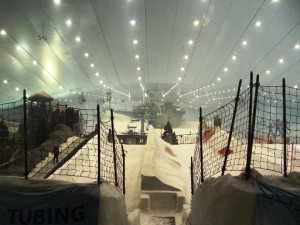
You can do the usual Middle Eastern tourist things in Dubai of course: ride a camel (or a dune buggy) in the desert, Scuba dive, or shop for gold and spices in the enormous and overwhelming gold and spice markets. But camels, gold, and spice markets are not the real Dubai; if there is such a thing, it is not a thing of the past. There is no genuine ancient quarter here, there are no no thousand-year-old ruins. When you come to Dubai, you come to see a vision of the future.
Architecture Unlimited

Dubai is a city that is inventing itself based on imagination fueled by money — lots and lots of money. And, we were told, with approximately 20 percent of all the construction cranes in the world, and a population that contains more foreign construction workers than citizens.
Take the World Islands, 300 man-made islands that together make-up a map of the world when viewed from the air. Each island was constructed at a cost of some 25 – 30 million dollars. Who thinks of things like these, I wondered, as I rode a boat around the World Islands and looked across to the famous silhouette of the Atlantis hotel on Palm Jumeirah Island. Palm Jumeirah is one of a trio of man-made Palm Islands, each of which form the shape of palm trees. The complex will have 2,000 villas, 40 luxury hotels, and facilities for up to 500,000 people; it’s advertised as being visible from the moon.
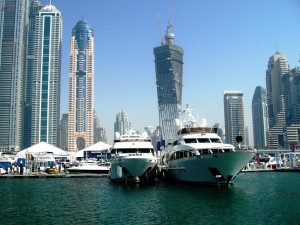
Where Imagination Reigns
Getting off the boat at the marina, I had a chance to see another of Dubai’s main architectural showcases. The waterfront area is lined with buildings, one wackier than the next. Ridiculous, slanting, swirling buildings, buildings built on an angle, buildings built to look like they were tipping over, buildings that seemed to corkscrew in crazy twisting circles. I wondered what it would be like to live in a building that from the outside looked like all the floors were askew and crooked. The idea seemed disorienting.
If you can have an island in the shape of the world, how about a hotel built to look like an ancient sailing vessel? That would be the Burj al Arab, situated on its own man-made island and the world’s first 7-star hotel. Tourists can visit the public areas and restaurants of this enormously ornate structure, where every room comes with a butler and where it sometimes seems than not a single square inch is left unglued.
The Burj Al Arab takes the idea of over the top and puts it, well, over the top.
The Burj Khalifa
For me, the highpoint, again, quite literally, was the Burj Khalifa, which is an example of magnitude on is own scale. “Get out your fish eye,” warned our guide, who, like so many other Emirati men, was named Mohammed. “You’ll need to take many pictures and then piece them together.” The building is elegant: It starts with a grounded-looking base that tappers up and up, ever more delicately, to end in a cloud-piercing spire, like the tippy top ornament on a Christmas tree. It reminded me of a Disney castle, ethereal and otherwordly. Speaking of which: A theme park twice the size of Disney World is on the planning boards.
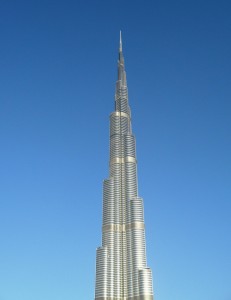
And yet more: “There are plans to build an even taller building than this one,” Mohammed told us, although, he added, the global recession might put that on hold for a bit. Indeed, many of Dubai’s buildings seemed eerily empty, with little street traffic, and few lights on in the evening. The Al Burj, slated to be new world’s tallest building at 1,200 meters tall — fully 50 percent taller than the Burj Khalifa, and three times the height of the Empire State Building — is on the planing boards. Will it ever be built? The occupancy rates at Burj Khalifa were decimated by the global recession of 2008, at one point dipping to only about 10 percent in late 2010, and some of the city-state’s ambitious plans, including the Al Burj have been delayed or put on on hold. But if Dubai’s recent history of building is anything to go by, not even the sky is the limit.
Practicalities
- Architecture tours are available from many tour companies. Your hotel can recommend one.
- Dubai works as a stop between the East Coast of the U.S. or South America and Asia, or between Europe and Africa or Asia.
- If you have a stamp in your passport from visting Israel, check to see about current regulations regarding entry; UAE entry rules can vary from year to year.
- Remember that with all of its futurism and its striking “best-biggest-most” value system, Dubai is still firmly in the conservative Moslem world of the Arabian peninsula. Dress and behavior (such as innocent — to westerners — kissing in public) can be criminal matters, an issue that may become more complex as more and more tourists visit Dubai.
Checked and updated 2019
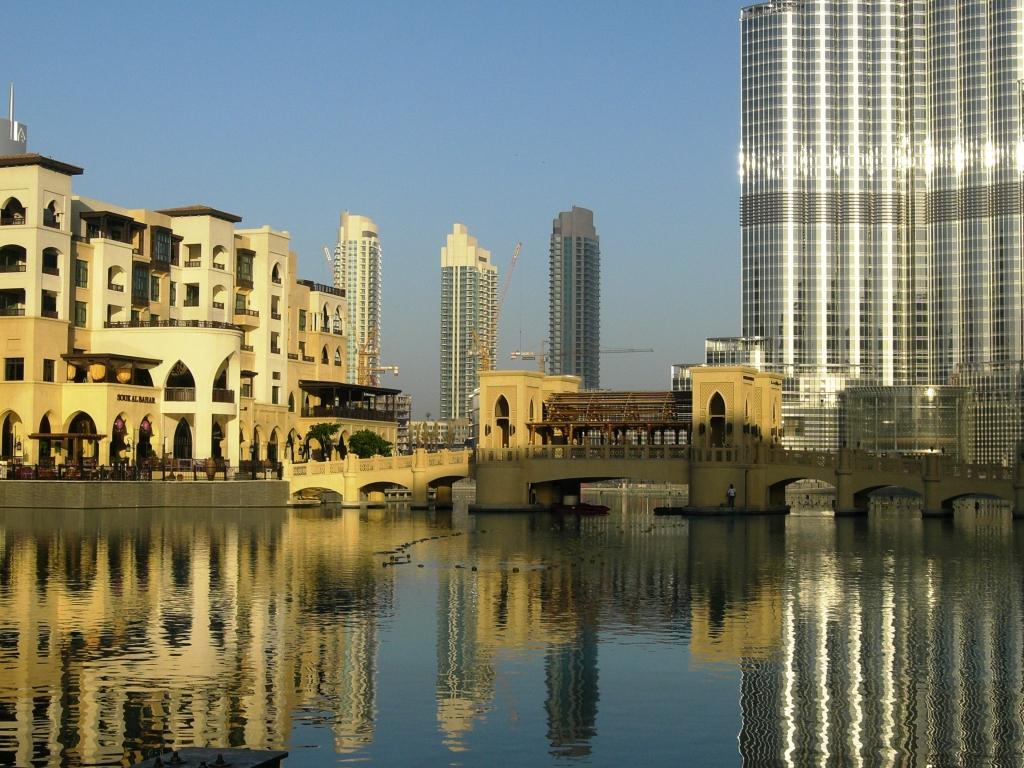
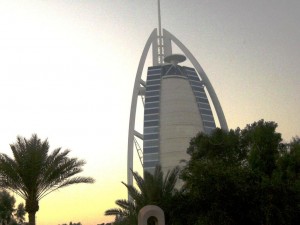
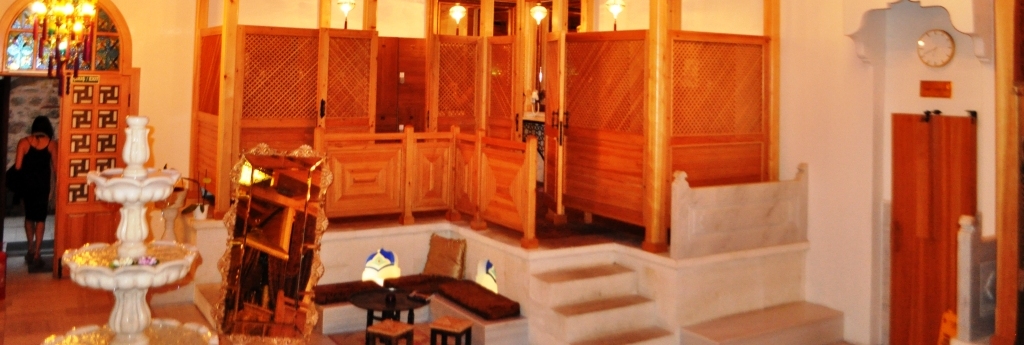
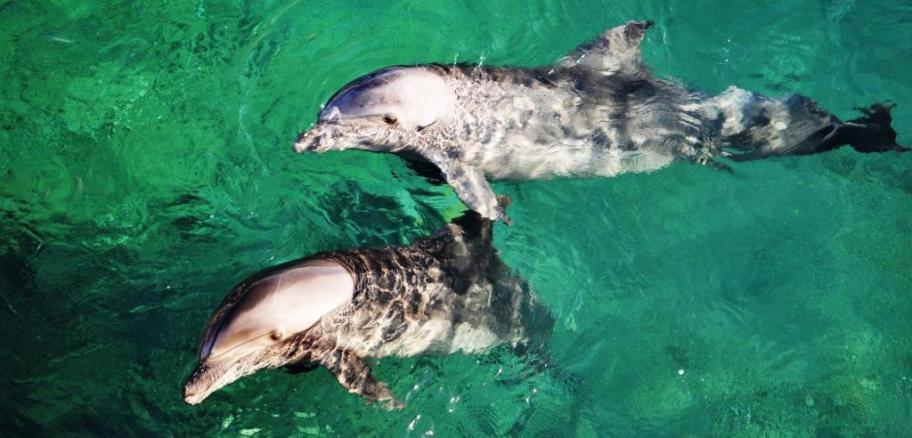
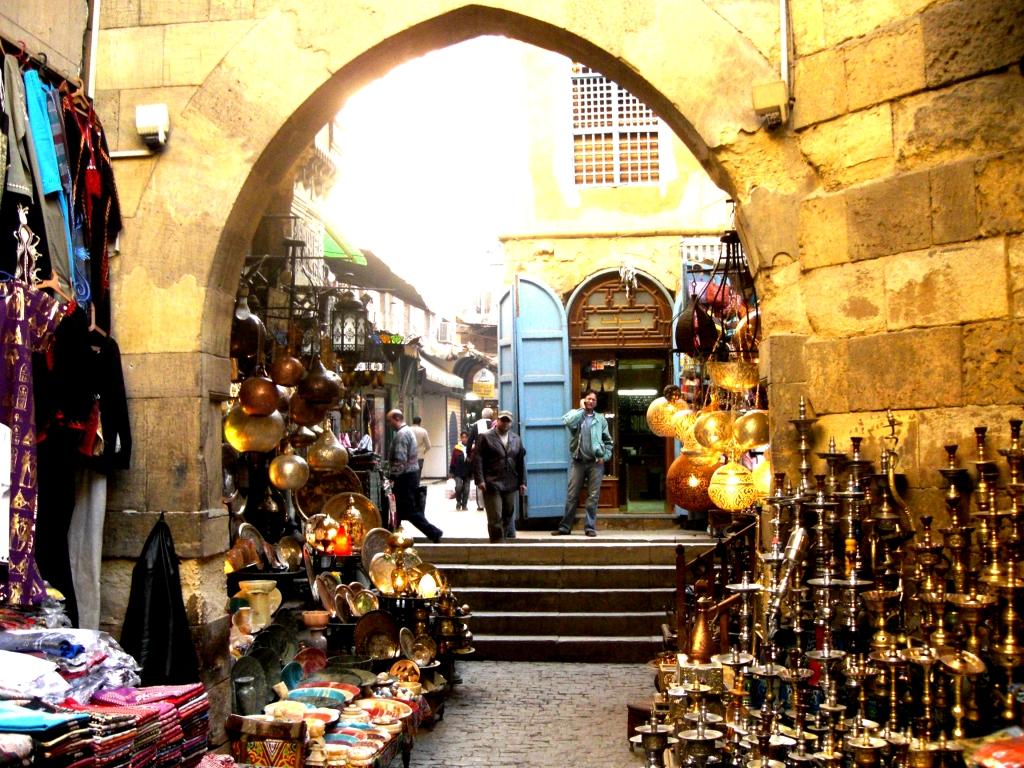
Ho, can you suggest a tour and price?